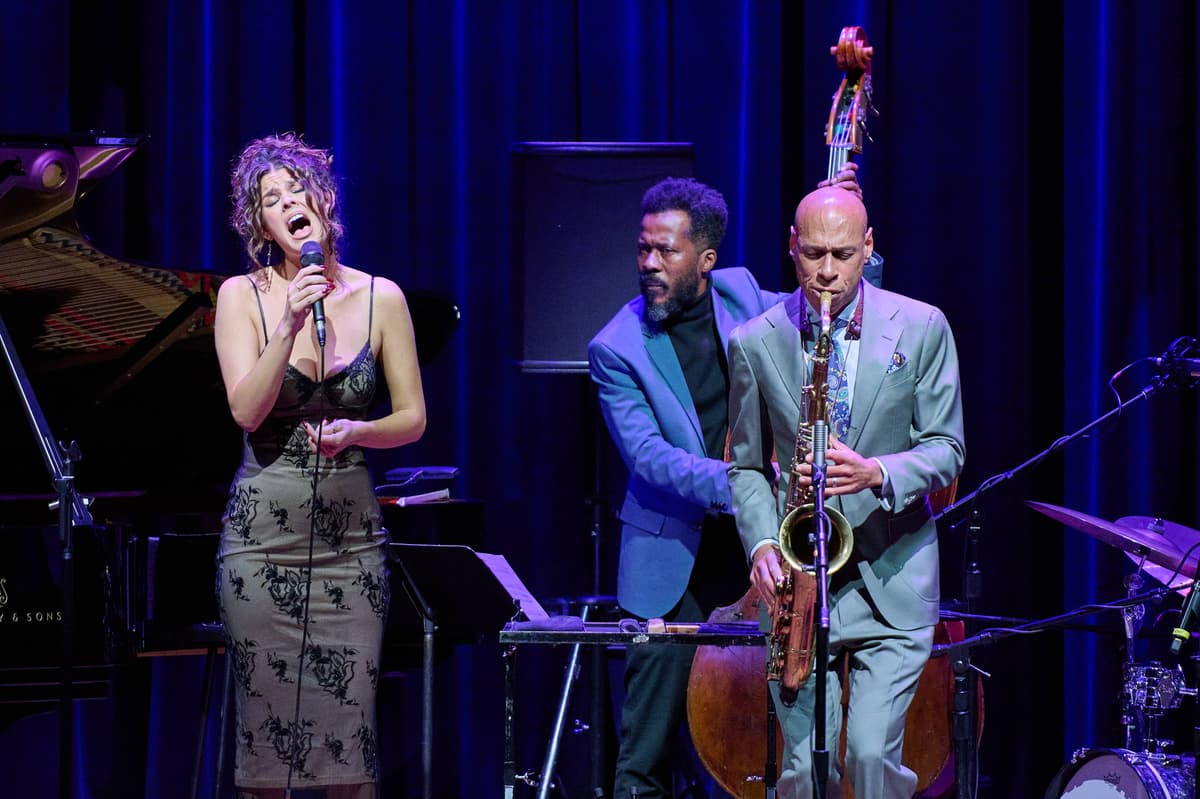Joshua Redman’s Old-Fashioned Idea — Songs About American Cities — Is Positively Avant-Garde
A rumination on the American experience that uses American songbook and jazz standards — often mashed together in surprising ways — as a point of departure.

In 1960, Ray Charles released an album that, as he later said, was built around a “corny idea” — to which he added, “but then, I’m a corny guy.” It was admittedly not a very original concept: the theme of a travel album, with songs about different places, had already been done by many major singers and bandleaders; Bing Crosby made at least three. Yet “Genius Hits the Road” might be the best-remembered location-themed album of all time, not least because it introduced Brother Ray’s classic, “Georgia on My Mind.”
For all his self-deprecation, Charles was far from a corny guy, and the success of “Genius Hits the Road” illustrates how a creative musician can rejuvenate a concept that’s been done so often that it’s literally a cliche. When Joshua Redman conceived of his new album, “Where Are We,” it must have struck him as an old-fashioned idea — songs about American cities — but one that hadn’t been done in so long that it’s positively avant-garde.
“Where Are We,” which Mr. Redman launched with a triumphant concert at the 92nd Street Y on Wednesday evening — September 27 — is a rumination on the American experience that uses American songbook and jazz standards — often mashed together in surprising ways — as a point of departure. Mr. Redman apparently wanted more than the melodies of these classic songs, he needed us to reconsider the words as well, thus he collaborates with a very impressive young vocalist, Gabrielle Cavassa, a recent winner of the Sarah Vaughan vocal competition.
Among the 13 tracks in the album, which is also being released as a two-LP vinyl set, there are about 20 songs altogether, including a few originals. In almost every case, he combines a classic or somewhat more traditional song with something surprising. Sometimes, he will mash up the old and the new, as when he uses Sufjan Stevens’s “Chicago” as an introduction and a countermelody to Count Basie’s iconic blues of roughly 70 years earlier, “Goin’ to Chicago.” Likewise, Thelonious Monk’s “San Francisco Holiday” is heard in the background to the Tony Bennett standard “I Left My Heart in San Francisco.”
Ms. Cavassa is a major discovery, and she cut an imposingly towering figure on the stage of 92NY, as the venue describes itself, with very high heels and even higher hair. On this album, Mr. Redman has her sing virtually everything very slowly in rubato — sometimes to offset a faster instrumental piece — which achieves a dreamy sound reminiscent of k.d. lang when she sings standards. Just to be certain, I checked out a few of her youtube videos to remind myself that she can, in fact, sing in 4/4 swing time.
At 92NY, Mr. Redman and Ms. Cavassa played a flawless 90 minute set with his regular rhythm section of pianist Aaron Parks, bassist Joe Sanders, and the euphoric drummer Brian Blade. For the album, Mr. Redman recruits several guest stars to solo on songs representing their respective hometowns, including young vibraphonist Joel Ross on the “Chicago” collage. Veteran guitarist Kurt Rosenwinkel plays on “Streets of Philadelphia,” which is both a relatively rare jazz interpretation of a Bruce Springsteen song and even rarer, a song about the City of Brotherly Love. Trumpeter Nicholas Payton solos memorably on “Do You Know What It Means to Miss New Orleans,” and the three “voices” — Messrs. Payton and Redman and Ms. Cavassa — end the track with some beautifully-realized counterpoint and harmony.
At the Y, the ensemble treated us to a few bonus tracks, songs that fit the theme but aren’t on the album, memorably, including a high speed “I Got Rhythm” variation dedicated to “Boston Drivers” and and a startling reading of “Hotel California” that was so achingly slow that you’d assume all the residents of said hotel must be stoned.
Yet the most moving combination of two pieces of music — somehow it won’t do to call it a “medley” — is a stark juxtaposition of two jazz standards, one comparatively frivolous, the 1934 “Stars Fell on Alabama,” by “Stardust” lyricists Mitchell Parish, and the monumentally serious 1963 “Alabama” by John Coltrane. Ms. Cavassa sings the first, all wistful and romantic, and then there’s a pause before Mr. Redman launches into Coltrane’s dirge, written in response to the Ku Klux Klan’s infamous 1963 bombing of the 16th Street Baptist Church at Birmingham, resulting in the murder of four little girls.
Combining the two not only makes a timely comment about the state of Alabama but about our country as a whole, asking how a place that inspired such a beautiful love song could also be the scene of one of the most heinous acts of terrorism in history. Mr. Redman forces us to consider both of those points, to somehow hold them in our head at the same time, which, as he intends it, is impossible. No wonder the stars are falling.

